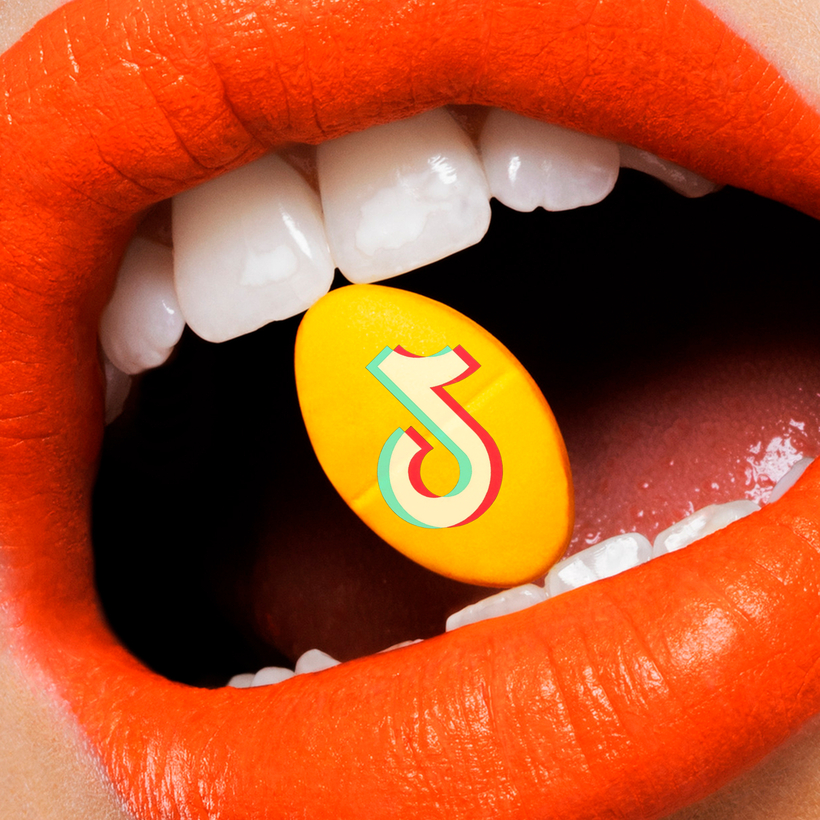Stella Aubert knows the secret to healing Hashimoto’s. The New Mexico–based chiropractor and “cellular detox specialist” dispenses wisdom on TikTok, in videos where she often wears a white doctor’s coat. While the disorder is an autoimmune disease that impacts the thyroid—a gland that controls the metabolism—Aubert believes that it is really more about negative emotions, “which can get stored in your thyroid,” she claims in one video with 16,000 views.
Hashimoto’s is a fairly common condition—more than 1 in 50 Americans have it, the vast majority of them women. It’s the result of the immune system attacking thyroid cells, which triggers hormone imbalances, weight gain, and fatigue. There’s already a treatment: levothyroxine, a replacement thyroid hormone most people with the disease will need to be on for the rest of their lives. According to another video of Aubert’s, though, “if you have a doctor who is telling you you cannot heal from your ‘diagnosis,’” they’re wrong. “They do not understand the power of the human body.”

Like other autoimmune diseases, from lupus to type 1 diabetes, symptoms of Hashimoto’s are universally understood to be the consequence of the body attacking its own cells as if they were foreign invaders. It was first described in 1912 by a Japanese surgeon, Hakaru Hashimoto, who noticed high concentrations of white blood cells in the thyroids of four women. For decades, the disease was rarely reported. When autoimmune research began in earnest in the 1950s, scientists began to unravel the mysteries of Hashimoto’s and have studied the disorder ever since.
While autoimmunity appears to be on the rise in the United States, rates of Hashimoto’s have appeared relatively stable—possibly because genetics accounts for 70 percent of the risk. Nonetheless, the disease is trending. In just the past few years, Oprah Winfrey, Kelly Clarkson, and Gigi Hadid, among many others, have publicly announced their thyroid struggles.
Usually Hashimoto’s is offered up to the public as an explanation for headline-making weight fluctuations. Take Hadid: when her modeling career took off around 2014, Vogue noted her “curvy silhouette.” When she suddenly slimmed down in 2019, she took to Twitter to address her drastic weight loss: “Those of u who called me ‘too big for the industry’ were seeing inflammation & water retention due to [Hashimoto’s].”
Stella Aubert believes that Hashimoto’s and its cure are really more about negative emotions, “which can get stored in your thyroid.”
On TikTok, videos tagged with #Hashimotos have racked up 360 million views, and consist of breathless accounts of anti-inflammatory diets, customized exercise regimens, and other D.I.Y. health tips. In one post typical of the genre, a nutritionist with the disorder describes her three favorite foods to fight inflammation (kimchi, hemp seeds, and Brazil nuts). A popular Hashimoto’s poster with more than 870,000 followers, @heal.with.fifi, has made multiple videos about how changing her lifestyle has made the “tail” of her eyebrows grow back. “Part two PLEASE,” her followers begged.
For many TikTokers, the disease has become a veritable brand. Self-styled “hashi warriors” such as @justloveyourbody (more than 70,000 followers), @mccallmcpherson (more than 47,000 followers), and @weightloss.hashimotos (roughly 20,000 followers) have drawn in followers with their daily videos about #thyroidproblems, #hashimotosproblems, and #hashimotosfitness. Their bios are littered with dubious credentials: everyone’s a trained nurse, certified nutritionist, or chiropractor.

With the help of the algorithm, there are always new followers to be found. Hundreds of videos demand that TikTok users “STOP SCROLLING” and watch if they’ve ever experienced the disease’s common symptoms: brain fog, fatigue, and weight gain.
Both on- and offline, influencers offer a range of self-help solutions to Hashimoto’s, including extensive personal coaching, essential oils for “brain detoxification,” off-label use of low-dose naltrexone, healing spices, mind-body medicine for empaths, brain-training exercises, L.E.D.-light therapy, and more. Margaret Rayman, a professor of nutritional medicine at the University of Surrey, explained that while some lifestyle changes might help alleviate symptoms, fad diets and walking 10,000 steps a day won’t cure Hashimoto’s. People with the disease “aren’t making enough thyroid hormone,” Rayman says. A Synthroid prescription, not a Pilates class, will fix that.
After briefly perusing the Hashimoto’s corner of TikTok, Rayman said she “saw enough to see that people [on TikTok] don’t really understand the condition.”

What’s strange about Hashimoto’s arrival on the digital stage is that the disorder, unlike other faddish illnesses, is not, and never has been, contested or particularly complicated. Take chronic Lyme disease, a tick-borne illness that was en vogue in the 2010s. Part of the reason sufferers (including the other Hadids: Yolanda, Bella, and Anwar) were so vocal online about their symptoms—brain fog, fatigue, leaky gut, facial palsy—was because the existence of chronic Lyme was contested by the medical establishment. But Hashimoto’s is well known and relatively easy to diagnose with blood tests.
Perhaps that’s the charm. From the other side of a screen, Hashimoto’s recovery offers an unusually graceful narrative arc: the frowning “before” selfie dissolves into a smiling “after” selfie, thanks to medication. Yet there’s never a shortage of content when something as amorphous as “healing” is your goal. There are always more blood-test results to evaluate and eyebrow hairs to count.
To hear Eleanor Cummins reveal more about her story, listen to her on AIR MAIL’s Morning Meeting podcast
Eleanor Cummins is a freelance science writer

